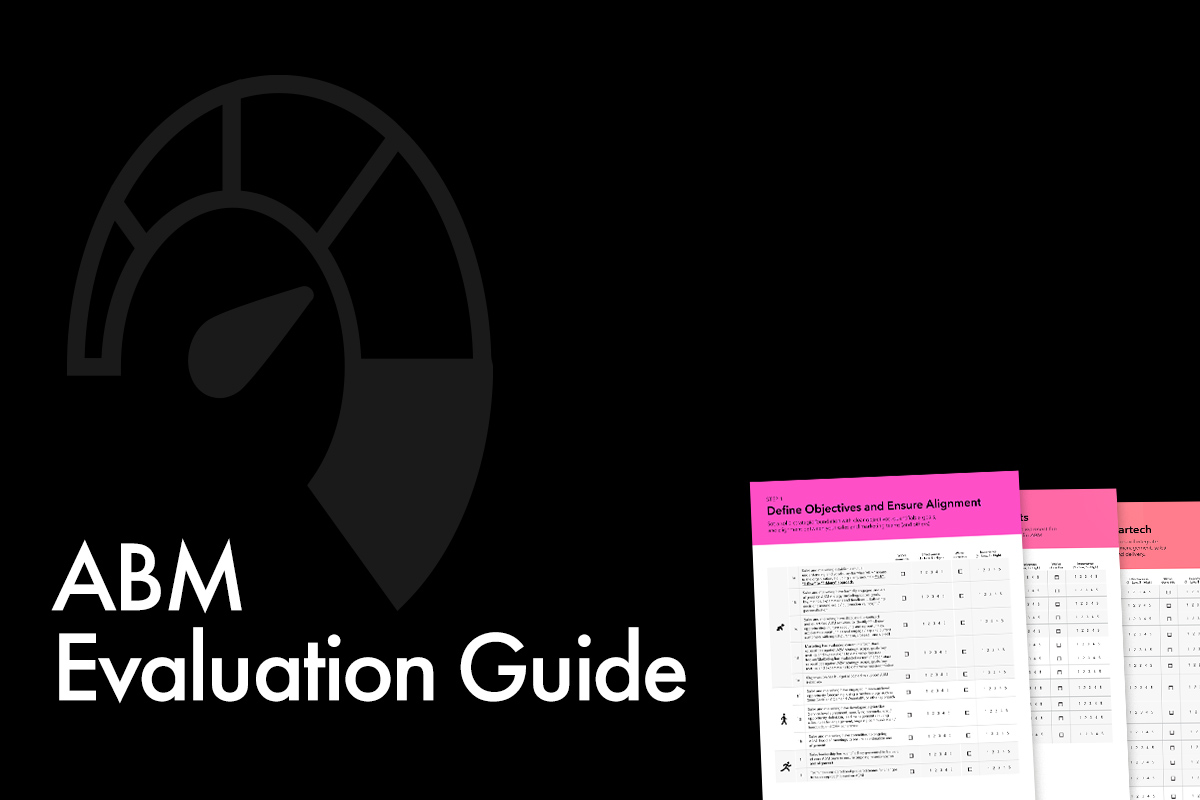Thinking Outside The (in)Box: How Content Can Make Or Break Nurturing Campaigns

Share this story
After spending countless hours planning and testing, you’re feeling pretty confident about launching your lead nurturing program. You’re thinking to yourself, “I’m ready to start seeing some results!” And you are ready … right?
Wrong.
Why? Because most marketers don’t focus enough of their efforts and resources on nailing the right content strategy. In this two-part blog series, we’ve put together some tips to help you take your next nurturing journey from “This is pretty good” to “Whoa! Awesome!”
1. Let them tell you who they are.
Unless you are living in a perfect world, not every record in your contact database is perfectly segmented. Data segmentation is crucial in lead nurturing because it allows marketers to tailor messages according to key data categories (e.g., job title or role). After all, you wouldn’t market an iPad the same way to Fortune 500 CEOs and stay-at-home moms, would you? Design an email that allows contacts in your database to categorize themselves under one of your key segments, in order to shift them to a more relevant nurturing messaging stream. These emails can be anything from a short survey to an ROI calculator, or even an email that includes a few links built to separate the database by persona (e.g., If contact clicks link 1, he is most likely persona A).
2. Ditch the pitch.
There is nothing worse than stepping into a store and being bombarded by salesmen with one thing in mind: making sure you buy — fast. Remember this when using email as part of your nurturing journeys. Don’t just sell; educate your contacts and offer real value. Tailor your content so that when your contacts see an email from you, they want to open it because they know they will learn something relevant to their goals and challenges. Remember, if your content is too sales-heavy, contacts will put their blinders up and lose interest in opening any emails from you (or worse, unsubscribe). Keep in mind, though, that there is such a thing as being too conservative in your messaging. If you completely refrain from promoting your product or service, you may miss out on your end goal.
3. Speak their language.
Marketers often make the big mistake of communicating to their contacts using language that doesn’t mimic how people actually speak. When you place an order at a coffee shop, you don’t say, “Greetings! Please provide me with a delightfully hot caffeinated beverage.” Of course not! You probably say, “Hi! I’d like a cup of coffee, please!” Don’t use big words for the sake of using big words; instead, focus on communicating a clear message that will resonate with your audience (and that they will understand).
4. Be relevant.
Personalize, personalize and personalize some more — and remember, personalization is not just about using the contact’s first name (“Dear Jim” versus “Dear Prospect”). It’s about really considering the type of content, messaging, timing and marketing tactics to which your contacts best respond. So, following the iPad example in tip No. 1 …
- A CEO may respond best to an email with hard stats on how companies that leverage tablet technology increase their productivity by X%
- A stay-at-home mom may be more likely to respond to an email about using an iPad to help teach numbers and ABCs
Here’s an extra tip: Before launching your nurturing journeys, leverage the services of data-enriching vendors and add any important data that can help in segmenting your database.
5. Get creative with repurposing.
As marketers, we all know that “content is key” — just like we know how difficult and expensive it can be to create new content. This is where getting creative with repurposing comes in. Let’s say you are hosting a webinar. A lot of your time and resources are going into this webinar — researching a topic, putting together a compelling slide deck, drafting promotional copy, etc. So, my question is this: If you already have all this great webinar content, why stop there when you could repurpose the content in a variety of ways? Use the same content to create a new white paper (you can even use this white paper as a follow-up asset to the webinar itself), build a fun infographic, create email content … Before you know it, you’ll have multiple new assets to feed your nurturing journey streams. The possibilities are endless!
6. Give them a chance to escape.
Let’s say you opted in to receive emails from a snack company. Based on your online behavior, it was determined that you are interested in chocolate goodies, and you were automatically entered into the chocolate goodies nurturing journey. On the third email of the chocolate journey, however, you click on a banner promoting the company’s potato chip product, which automatically switches you from the chocolate journey to the potato chip journey. This is called an “escape hatch.” Escape hatches should be placed throughout your emails, allowing contacts to choose the path that is most relevant to them. If you want to get extra fancy, you can use dynamic content to create a single set of emails that dynamically changes based on the information you collect about your contacts.
7. Remember: Experimenting is not just for college.
Don’t be afraid to experiment and try new messaging streams that are outside the typical lead generation approach. Some out-of-the-ordinary messaging streams include:
- The “We miss you!” messaging stream:
Designed to re-engage your leads after a period of inactivity, the “We miss you!” messaging track requires you to know two things about your contacts:
• Where are they in the pipeline?
• Why did they stop engaging with you in the first place? - The “Welcome!” messaging stream:
Give brand-new leads the red carpet treatment, with offers designed especially for them — special discounts, white paper downloads, etc. - The “P.I.” messaging stream:
Use analytics and reporting to “go undercover” and find the holes in your data. Build a nurturing track that will allow you to get to know your leads (e.g., forms, surveys, calculators).
Don’t forget: Lead nurturing should be designed as a conversation between you and your prospects. You can’t have a good conversation unless you’re saying something relevant and meaningful. And the more you know about the person you’re talking with, the more relevant and engaging you can be.
The conversation will continue to evolve, as the prospect increases their engagement with your organization and eventually becomes a loyal customer. So, never stop engaging!
Don’t miss the second post in this two-part blog series, “ Thinking Outside the (in)Box: Nurturing Journeys That Go Beyond Email.”
Relying solely on drip nurturing (i.e., the send email–wait–send email–wait cycle) to engage your leads is like using a toothbrush to clean the Empire State building: It’s just not effective. In part two of this blog post series, you will learn how to utilize multiple marketing tactics to truly engage your leads beyond the email inbox. Stay tuned!



